Wondermondo 🢖 World 🢖 Wonders of Asia 🢖 Wonders of Philippines
Territory
Wonders of Philippines
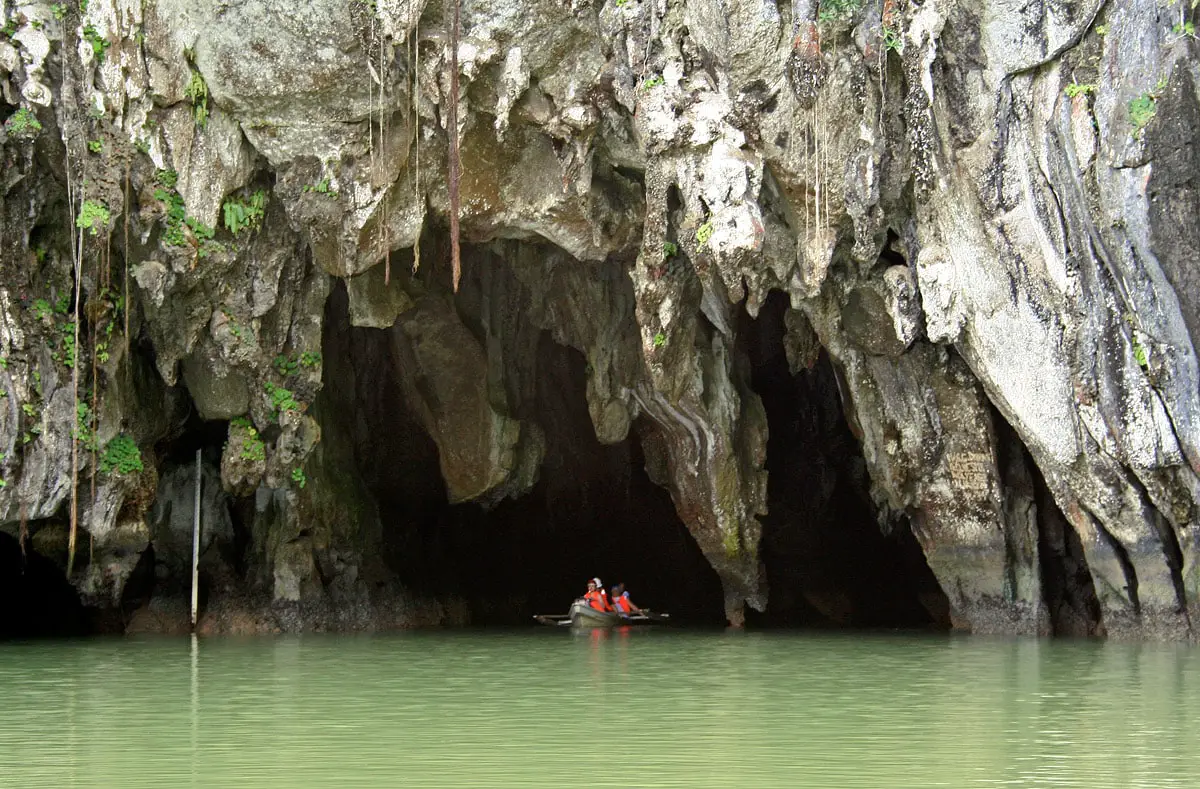
 Highlights
Highlights
The charming Philippines are just like a true Southern tropical paradise. The wealth and diversity of the countless landmarks on thousands of islands are hard to grasp. The highlights of the Philippines are:
- Caves and other karst phenomena – here are some of the most impressive caves in the world, e.g. Puerto Princesa Subterranean River.
- Unique biotopes – the fertile tropical islands of the Philippines serve as natural laboratories of selection and evolution. One small island has a population of white squirrels, another – the smallest ox in the world, many species of mammals and birds have been discovered lately and many more are still waiting for their discoverers.
- Shelters of prehistoric people – the prehistory of the Philippines is complex, with numerous unsolved puzzles. Diverse people reached these islands and settled here. Even a species of dwarf people developed here in the distant past. Countless caves and grottoes of the Philippines contain traces left by manifold prehistoric tribes and races.
- Local architecture – Philippines is a part of global culture since the 16th century and is following the mainstream global styles in architecture and other arts. The preserved monuments of architecture show distinct local influences – this is well seen already in the Baroque churches and fortifications.
Map with the described wonders
If you see this after your page is loaded completely, leafletJS files are missing.
 Top 25 wonders of Philippines
Top 25 wonders of Philippines
Geological wonders
Chocolate Hills
Bohol
Unique geomorphological phenomenon – 1,200 – 1,700 similar grass-covered conical hills that form a unique landscape. The height of each hill – 40 – 120 m. During the dry periods, hills turn brown. Formed from coral limestone that has been uplifted and eroded. Hills contain numerous caves.
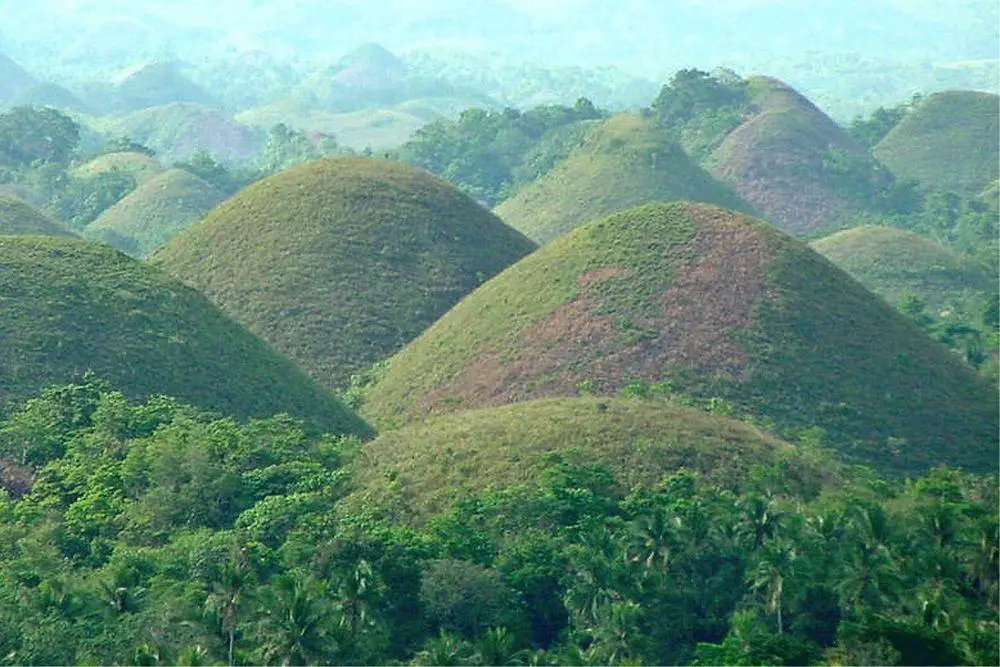
Taal Volcano and Taal Lake
Batangas
400 m high, active volcano. An unusual feature is the fact that there is a lake on an island (Luzon), with the summit of the volcano as an island in this lake and a crater lake in the middle of this volcano with a small island in it. In Taal Lake lives the only freshwater sardine in the world, the only freshwater sea snake, and many other endemic species.
Puerto Princesa Subterranean River
Palawan
More than 24 km long cave system with 8.4 kilometers long underground river, which is accessible directly from the sea and navigable up to 4.2 km deep. Contains also Italian’s Chamber – a giant cave hall.
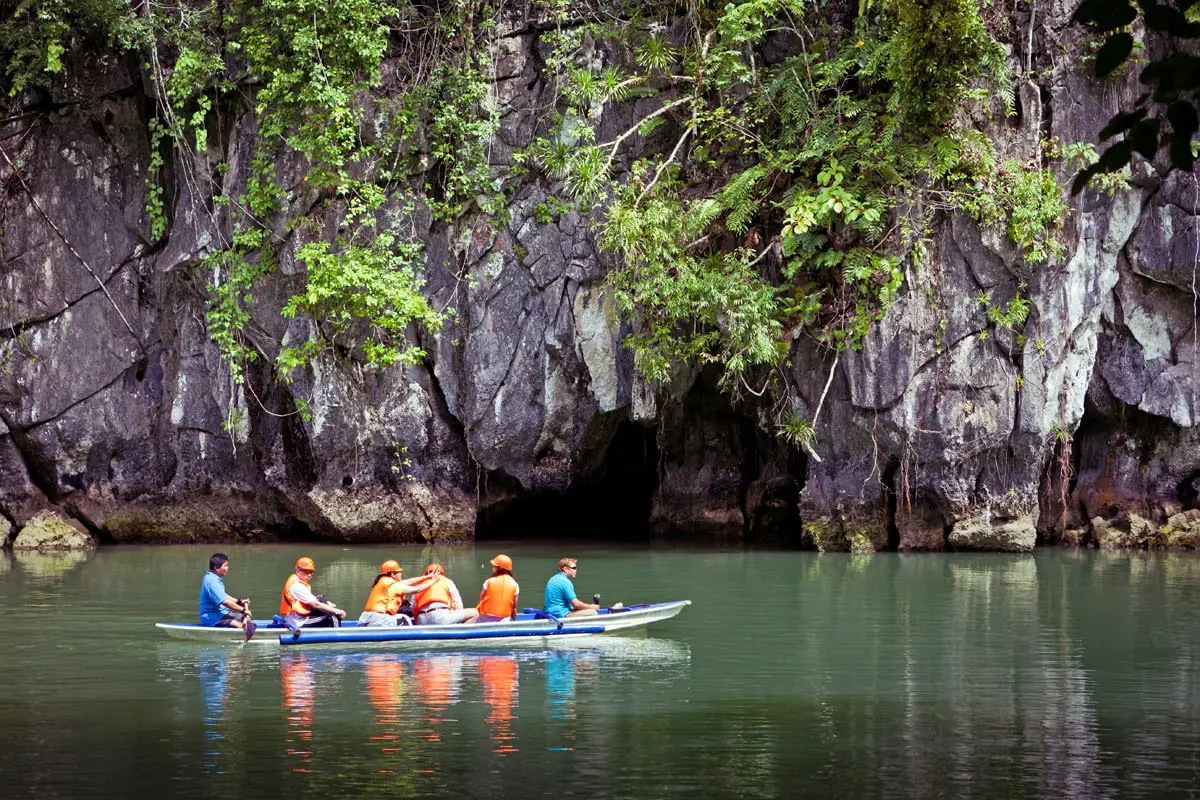
Hinatuan Enchanted River
Surigao del Sur
Unique monument of nature – deep trench coming from the sea and entering the jungle. It is filled with seawater and reportedly with large sea fish seen in it. The water in this lagoon is deep blue and lucid. Locals consider this place to be enchanted and guarded by superhuman beings.
Coron Island
Palawan
Beautiful, forested island with steep limestone cliffs and numerous interesting rock formations up to 600 m high. Kayangan Lake has extremely lucid water.
Calbiga Caves (Langun – Gobingob Caves)
Samar
Giant cave system consisting of 12 caves. Most passages are unexplored. Possibly the largest cave system in South-East Asia. Caves in some places have giant size, and contain numerous beautiful speleothems and many rare and endemic species of animals.
Langun Cave
Samar
This giant, beautiful cave contains one of the largest cave rooms in the world. It contains many species of endemic and very rare animals.
Tinuy-an Falls
Surigao del Sur
One of the most impressive waterfalls in the Philippines. 55 m tall (?) and 95 m wide waterfalls with several plunges. Surrounded by lush rainforest. Falls are famous thanks to the rainbow that appears every sunny morning from 9 to 11 AM.
Sumaging – Latipan – Lomyang Crystal Cave
Mountain Province
This beautiful cave with six entrances goes up to a depth of 163 m. The cave system contains an impressive system of gours – Kings Curtain. The cave contains remnants of burials, some coffins still are hanging near one of the entrances.
Biological wonders
Callao Cave
Cagayan
An enormous cave system with beautiful speleothems. There have been found the earliest human remains in the Philippines, at least 67 thousand years old. These remnants belong to an extinct species of humans – Homo luzonensis.
Balete tree in Maria Aurora
Aurora
Possibly the largest balete (Ficus balete) tree in Asia. Height of the tree up to 60 – 65 m. The girth of the trunk might exceed 30 m – it is told that 60 adult men are needed to get their arms around the tree, although it is hard to measure the tree due to countless roots around it.
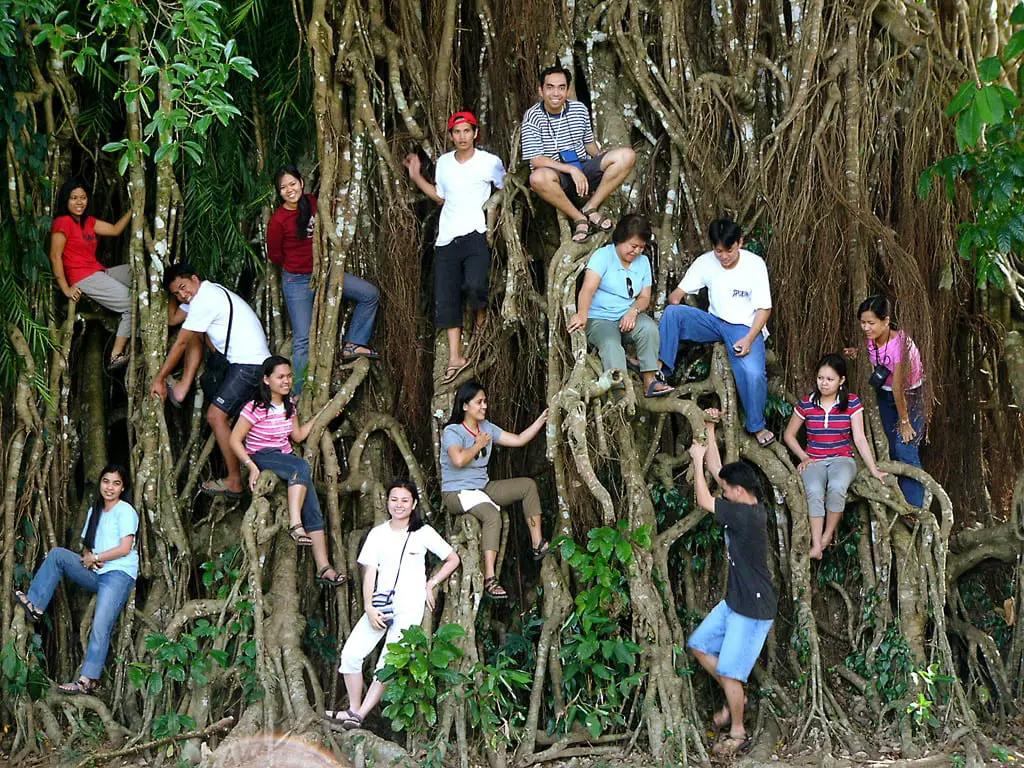
Donsol whale sharks
Sorsogon
The largest group of whale sharks – the largest fishes in the world – can be observed here. Sea near Donsol is visited by a group of 40 (sometimes hundreds) whale sharks on a regular basis from November to May.
Monfort Bat Cave
Davao del Norte
This cave contains the world’s largest colony of Geoffroy’s Rousette bats (Rousettus amplexicaudatus) consisting of approximately 1.8 million individuals. It is believed that currently, this comparatively small cave is overpopulated – every spot in the cave is covered with bats.
Lazi balete
Siquijor
This tree is considered to be devilish because it resembles a giant swamp creature. Many believe that the tree is enchanted and supernatural beings live in it. The tree has a very large girth and locals love to tell that it is 4,000 years old. A powerful spring starts below the tree.
Scrubland and forest of Mount Apo
Davao del Norte
This potentially active, 2,954 m tall volcano has ecosystems with an extremely high level of endemism. Here live numerous species of birds that are found only here, and many endemic animals and plants. Above the height of 2,700 m, the summit of the volcano is covered with scrubland.
Pygmy forest of Mount Hamiguitan
Davao Oriental
The upper part of the 1,620 m high mountain is covered with pygmy forest (225 ha) that grows on rare ultramafic soil with a high content of heavy metals. Here are numerous endemic species of plants and animals. Amazing is the enormous pitcher plant Nepenthis hamiguitanensis.
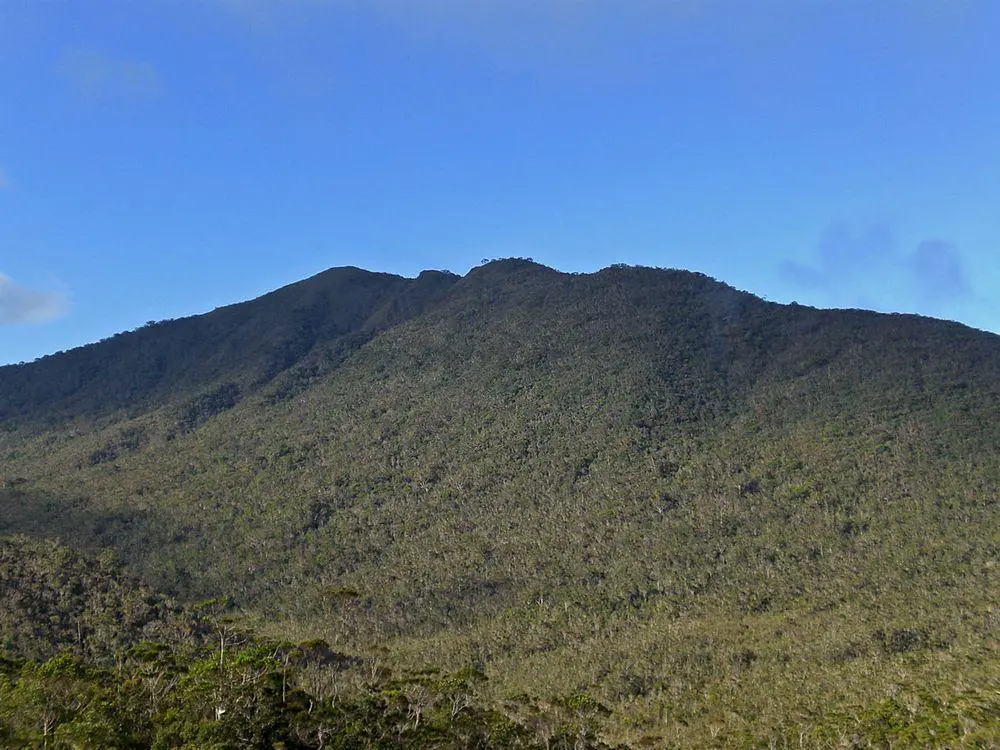
Archaeological wonders
Tabon Caves
Palawan
Rocky promontory of Palawan – Lipuun Point – is honeycombed with at least 200 caves and shelters. These shelters served as a habitat for early humans, living here 50,000 – 9,000 BP. Here were found the oldest remnants of Homo sapiens in Southeast Asia and other valuable finds – jar burials from late Neolithic and later times, porcelain from China.
Kabayan Mummy Burial Caves
Benguet
More than 200 rock-cut burial caves with bones of people still found in some 15 of them. Ibaloi people in prehistoric times mastered indigenous technology for the mummification of their noble people, the process could take up to two years. This practice was discontinued after the coming of Christianity.
Cagayan Paleolithic Sites
Cagayan
More than 90 Paleolithic sites have yielded stone tools of early people together with the remnants of amazing extinct animals – stegodons, elephants, rhinoceros, and large tortoises. It is possible that humans who lived here belonged to Homo erectus species.
Architecture wonders
Batad rice terraces and Banaue Rice Terraces
Ifugao
Some of the most impressive rice terraces in the world, up to 2,000 years old. These structures represent the high skills of the Ifugao people to regulate water balance and ecological balance. They managed to convert it into agricultural land even 70° steep hillsides. Rice terraces are the only stone structures developed in the Philippines before the coming of Europeans.
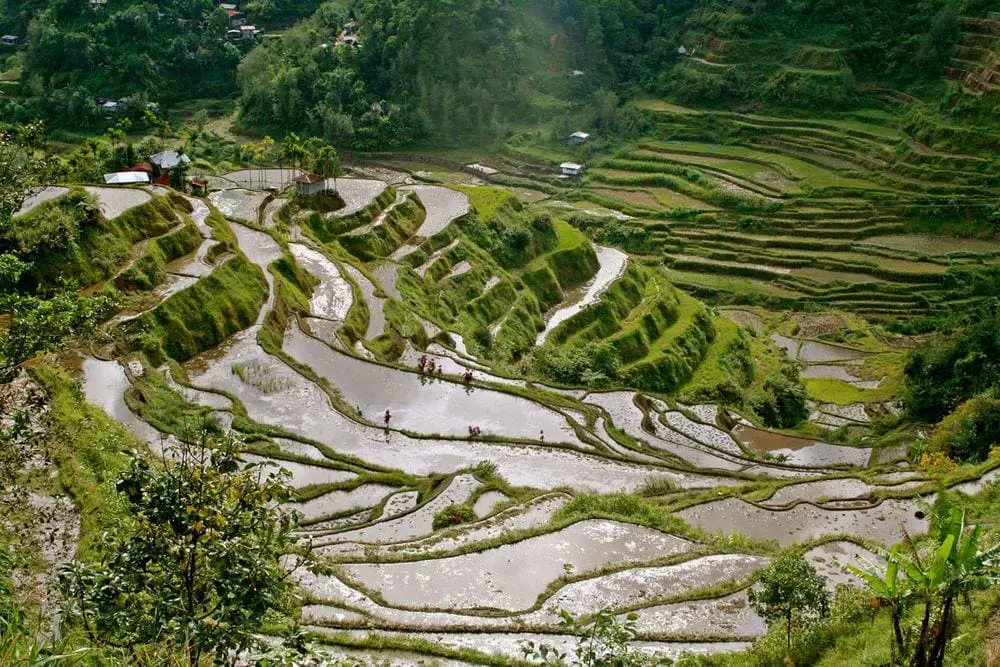
Belfry of Cagsawa Church
Albay
Ruins of belfry – the only remnant of Cagsawa village after it was covered with hot ashes in 1814. Some 200 people died in the church.
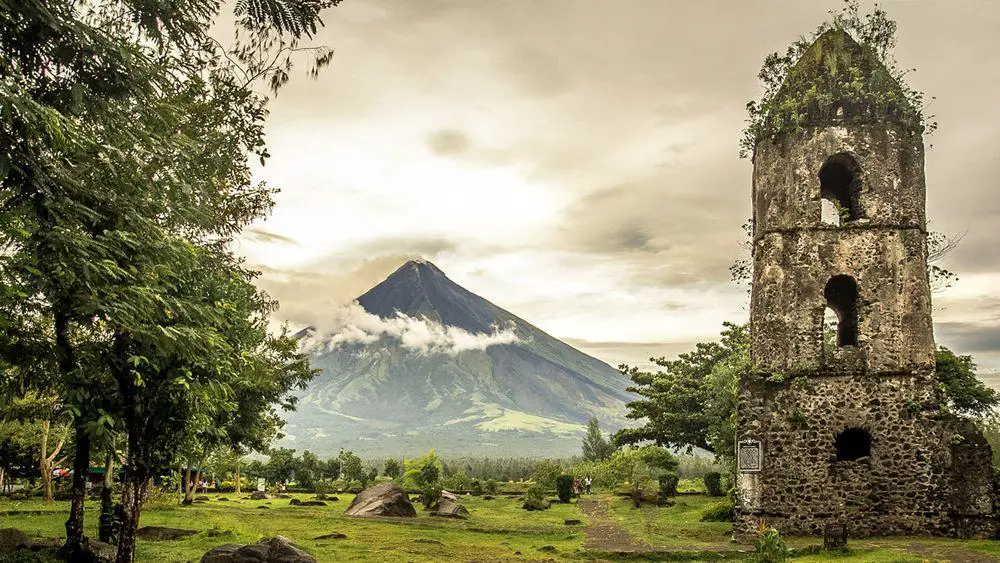
Tumauini Church of San Mattias
Isabela
Highly unusual Baroque church built entirely of brick with terracotta sculptures. A beautiful accent is the cylindrical bell tower next to the church.
San Agustin Church in Paoay
Ilocos Norte
Beautiful Baroque church with unique architecture: it resembles a stone masonry pyramid. This is a remarkable engineering achievement built to resist powerful earthquakes. Construction started in 1704. Separate belltower.
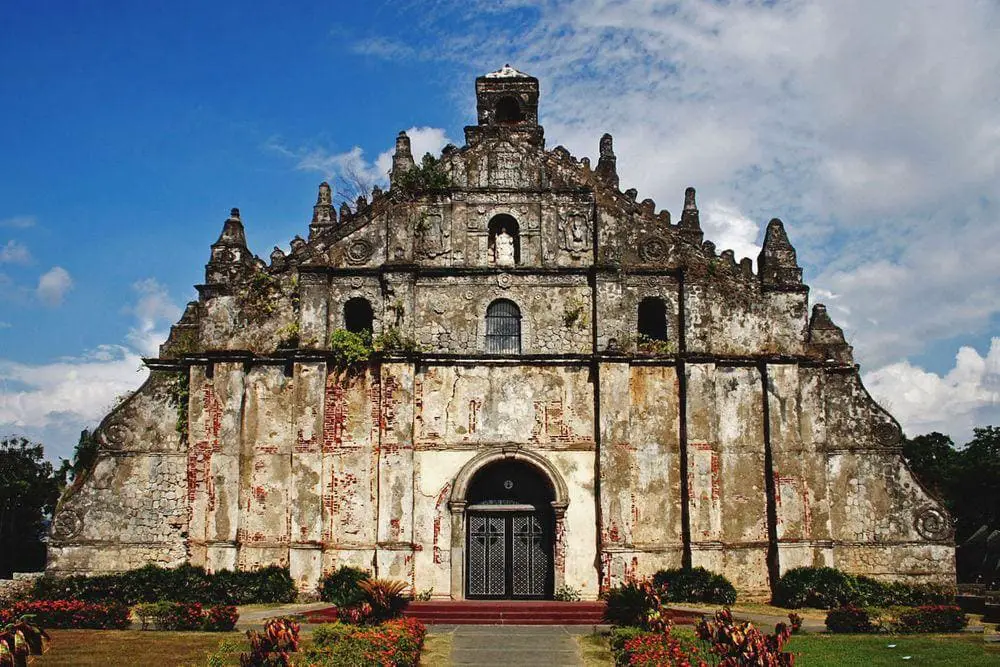
San Agustin Church
Metro Manila
The oldest existing church and the oldest building in the Philippines, a significant Baroque monument. Constructed in 1607. While the exterior of the building is rather simple, the interior is rich with ornamentation and artwork. The only building in the historical center of Manila that survived the heavy fights in 1945.
Miag-ao Church (Santo Tomas de Villanueva Church)
Iloilo
Valuable Baroque church and fortress that was built in 1787-97. The architecture of the building blends Spanish and local influences. The gorgeous facade of the building is adorned with beautiful reliefs, the centerpiece is a depiction of an enormous coconut tree. Site of legends.
 Recommended books
Recommended books
The Rough Guide to the Philippines
Explore the Philippines with the smartest and most insightful guidebook on the market. Written with Rough Guides’ trademark mix of honesty, wit, and practical advice, this fully updated, stunningly illustrated travel guide brings you comprehensive coverage of all the country’s unmissable experiences. Rough Guides authors have visited every corner of this vast archipelago, and whether you’re diving in the turquoise waters of Palawan, exploring the iconic Chocolate Hills on Bohol, or climbing volcanic Mount Pinatubo, this new edition of The Rough Guide to the Philippines will show you the best places to sleep, eat, drink, shop and party along the way, with options to suit every budget.
The Philippines: A Visual Journey
The Philippine Archipelago with its 7,100 islands is culturally diverse and unique in Southeast Asia, and renowned for the splendor of its coastal beaches and terraced mountains. Seventy million Filipinos have been nurtured by both tropical environment and unique historical development—through 300 years of Spanish Christianization and 40 years of American modernization—and have emerged as an attractive blend of East and West, soul and style. The island country is perhaps best known for the friendliness of its people and their natural sense of song, dance, and hospitality.

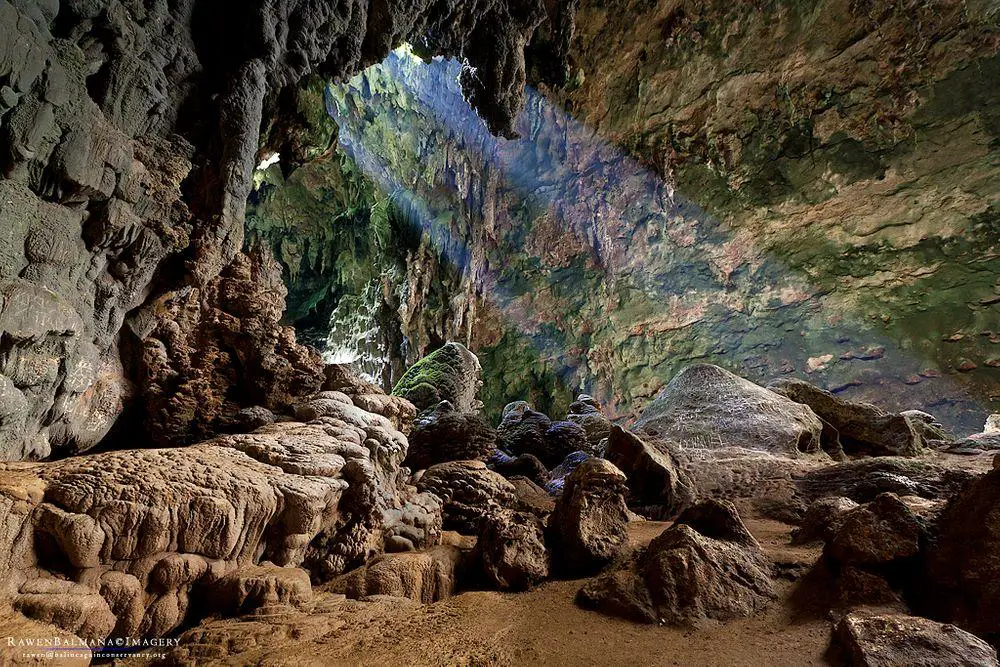


Thank you/ This is great